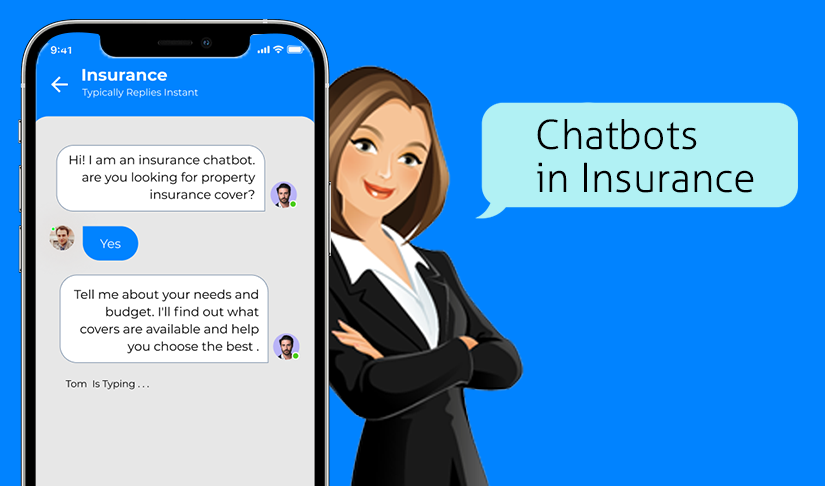Are AI Virtual Assistants Becoming Key Players in Insurance Operations

In the insurance industry, rising customer expectations are pointing to an increased demand for more self-guided interaction with providers before they get handed over to human support in the final lap. Conversational AI virtual assistants using Generative AI as their backbone are transforming how insurance companies handle both customer engagement and internal operations.
The Forrester Wave™ report for Q3 2024, says that virtual assistants for insurance are the way forward because every marketer or seller in the insurance industry is already familiar with conversational AI in their personal lives. At work, there is no need to convert them to the AI virtual assistant bandwagon because they've already felt the ease in their digital interactions.
From First Contact to Finish: Conversational AI Keeps Customers' Journeys on Track
What sets AI virtual assistants apart is their ability to manage the entire customer journey. Generative AI technology also known as Large Language Models (LLM) with Natural Language Processing (NLP) has evolved far beyond being just Chat Assistants. They help your team stay in the loop with real-time, role-specific insights so your team can jump right in and connect with customers exactly when it matters. It’s like a newcomer to an ongoing conversation getting a heads-up on what’s happening so they can immediately join in.
LLMs are used within NLP because they are powerful tools for handling complex language tasks. NLP provides the overarching framework and techniques for processing human language, while LLMs offer advanced capabilities like text generation, translation, and understanding, making them a key component in modern NLP applications.
When AI hands over conversations to human representatives, they pass along critical insights and context, making sure that sales teams and customer success reps know exactly how to respond. This smooth handoff keeps customers from experiencing the frustrating gaps that often come with traditional service models, leading to better satisfaction and stronger loyalty. But it’s not just about customer interactions—these AI tools are also streamlining internal processes by automating routine tasks. By embracing AI virtual assistants, insurance companies are setting new benchmarks for efficiency and customer care in a fiercely competitive market.
The survey of insurance C-suite decision-makers, who are in charge of greenlighting new tech, found that 67% of companies are already piloting large language models (LLMs). This is a strong indicator that widespread adoption is on the way. - Conning Survey, quoted by Risk & Insurance, March 2024
Large Language Models That Give AI Virtual Assistants a Human-like Response

Virtual assistants use some pretty cool and complex technology. Insurance chatbots—unlike human agents—can juggle multiple queries at the same time. Here’s a quick look at the key technologies that make these large language models (LLM) so effective.
Speech-to-Text (STT) and Text-to-Speech (TTS):
-
Speech-to-text converts spoken words into text by capturing vibrations from speech, converting them into digital signals, and matching them to words.
-
TTS does the opposite, turning text into human-like speech using machine learning and Generative AI.
-
Together, STT and TTS enable smooth, efficient communication between users and AI assistants, transforming simple voice commands into intelligent, conversational interactions.
Computer Vision (CV):
-
CV allows AI to "see" by interpreting visual data from cameras and videos.
-
This technology is crucial for virtual assistants that use visuals, enhancing user experience with generated videos and accurate responses.
Natural Language Processing (NLP) with Generative AI in Insurance:
-
LLMs use advanced algorithms to understand the context and meaning of words in a sentence. They can generate human-like text by predicting the next word or phrase in a sequence, making their responses more coherent and contextually relevant.
-
It simplifies speech recognition and ensures that AI assistants interpret user intent correctly, even from complex queries.
Deep Learning:
-
LLMs or Large Language Models typically use deep learning techniques, particularly neural networks with many layers, to process and generate language. This architecture allows them to capture complex patterns and relationships in the data.
-
It’s the technology behind advanced text generation systems like GPT-4. Generative AI models in insurance are creating nuanced, context-aware responses.
Industry Examples of Virtual Assistants in the Insurance Customer Journey
Here’s a step-by-step look at how insurance virtual assistants seamlessly integrate into customer journeys. At any point, if the conversation requires human intervention, the virtual assistant ensures a smooth handoff to a human agent. It passes along all relevant context and details, so the customer doesn’t have to repeat themselves.
Initial Contact and Inquiry
When a customer first engages with an insurance company, the experience is often overwhelming, with too many options and too little guidance. Insurance virtual assistants like “Allstate Digital Assistant” change that dynamic by offering immediate, personalized interaction. For instance, a customer looking to explore auto insurance options can simply type or speak their query, and the assistant, using advanced Natural Language Processing (NLP), provides tailored responses in real time. This instant connection eliminates the usual frustration of navigating complex websites, offering the customer exactly what they need right from the start.
Needs Assessment and Policy Recommendations
As the conversation progresses, the virtual assistant can help agents assess the customer’s needs by asking relevant questions and analyzing their responses. Tara, the smart insurance chatbot integrated with SimpleINSPIRE, knows exactly where you are in the system and can act as your AI-driven assistant with its ability to provide context-based interactions and trigger external Insurtech services,
Tara enhances the customer experience by leveraging both external data and your historical data. Plus, during the quoting process, Tara can even help agents with upselling, offering personalized recommendations. Thanks to its natural language processing (NLP) capabilities, Tara can also serve as a reliable self-service option, making the process smoother and more efficient.
Quote Generation and Comparison
After understanding the customer’s needs, the virtual assistant can generate quotes instantly and even present comparison options. For instance, GEICO’s “Kate” can quickly provide a side-by-side comparison of different coverage levels or pricing options based on the customer’s input. This transparency allows customers to weigh their options easily, without the pressure of a sales pitch, making the decision-making process smoother and more customer-friendly.
Application and Onboarding
Once a policy is chosen, virtual assistants streamline the application process. SimpleSolve’s virtual assistant, Tara, for example, can auto-fill forms with previously gathered information, ensuring that the customer doesn’t have to repeatedly enter the same details. This feature not only reduces the chance of errors but also speeds up the onboarding process, making it as hassle-free as possible.
Policy Management and Support
Even after the policy is active, virtual assistants continue to provide support. Liberty Mutual’s assistant allows customers to update their coverage, add a new vehicle, or make a payment at any time, day or night. This constant availability empowers customers to manage their insurance on their terms, providing convenience that wasn’t possible with traditional service models.
Claims Processing
When it comes time to file a claim, which is often a stressful experience, virtual assistants like Lemonade’s “AI Jim” guides customers through each step, from collecting the necessary documents to providing status updates in real time. This hands-on assistance not only speeds up the claims process but also reassures the customer, turning what could be a daunting task into a manageable one.
Ongoing Engagement and Retention
Virtual assistants don’t just handle immediate needs—they also play a crucial role in maintaining long-term customer relationships. For example, an assistant might notice changes in a customer’s life, such as the purchase of a new home or the birth of a child, and proactively suggest adjustments to their insurance coverage.
How to Get Started?
Should insurance companies opt for industry-specific solutions or a platform from a major core insurance tech provider that incorporates LLM capabilities? Alternatively, is it better to invest in developing and fine-tuning your own model? Each option comes with its set of advantages and challenges, depending on your company's resources, goals, and the specific needs of your operations.
To explore how SimpleSolve can assist you with AI virtual assistant integration tailored to your business, contact us for more information.
Topics: AI Chat Assistant








